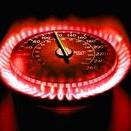Transizione ecologica ed il futuro della mobilità
-
Contenuti simili
-
- 166 risposte
- 27316 visite
-
Fiat Topolino & Topolino Dolcevita 2023 1 2 3 4 50
Pubblicato da AleMcGir,
- dolcevita
- topolino dolcevita
- (e 9 altri in più)
- 495 risposte
- 97057 visite
-
- 18 risposte
- 2311 visite
-
-
-














.thumb.jpg.d20c5008a881490f9c7f843d442a34f8.jpg)







.thumb.jpg.4ff109755894c3c33aafab6b2d0daf4d.jpg)


Messaggi Raccomandati: